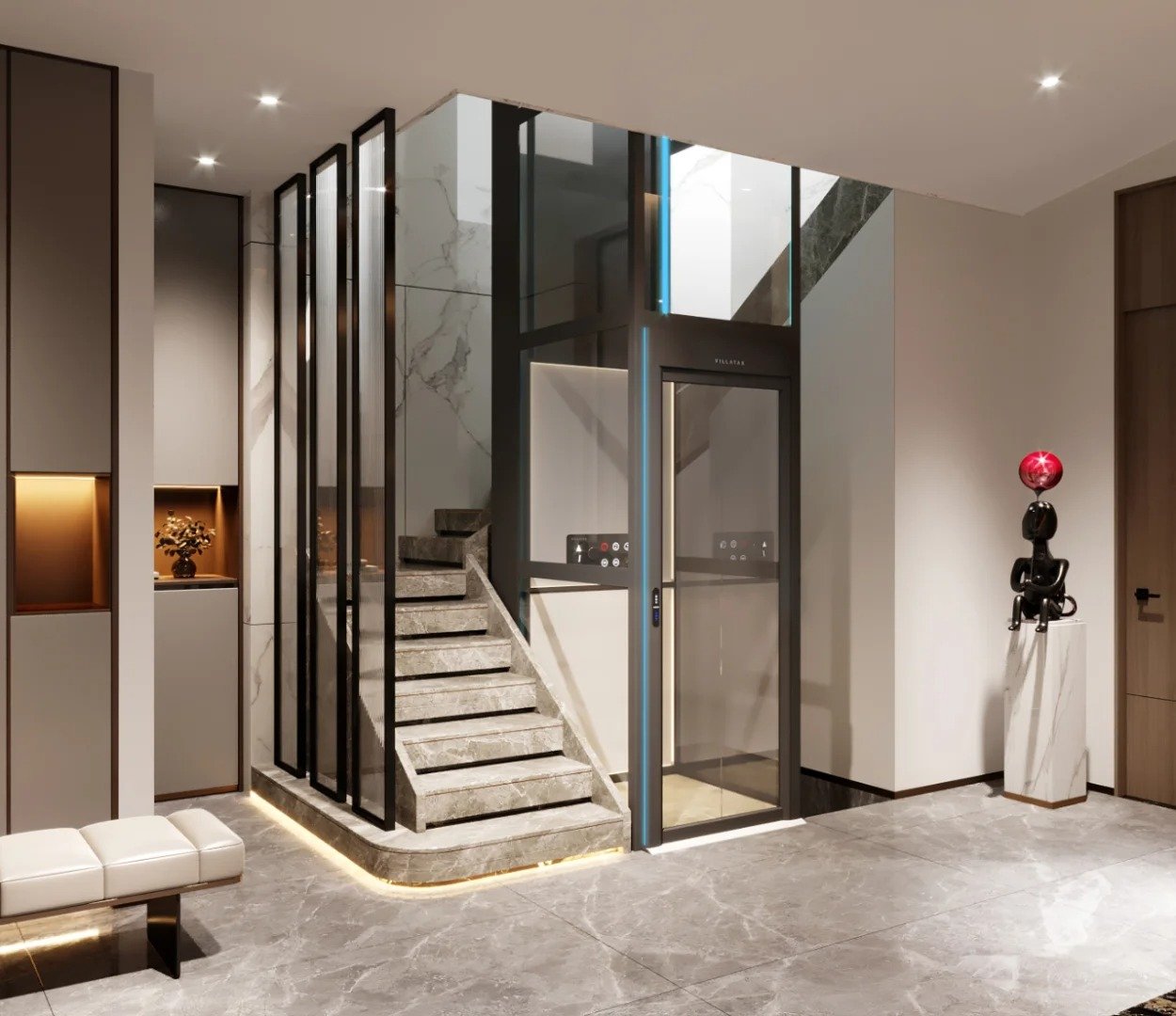Residential hydraulic elevators, as a classic vertical mobility solution, maintain irreplaceable status in the global residential market. Despite advancements in permanent magnet and traction technologies, their unique strengths in low-rise homes, retrofits, and heavy-load scenarios continue to deliver value, serving as a critical choice for aging societies and heritage preservation.
Technological Advantages and Core Features
The competitiveness of residential hydraulic elevators lies in their mechanical adaptability:
Space Efficiency: Eliminating machine rooms and deep pits (minimum pit depth 150mm), increasing shaft utilization by 25%, ideal for retrofitting historic buildings.
High Load Capacity: Up to 500kg capacity, surpassing traction elevators (≤400kg), suitable for moving large furniture or medical equipment.
Safety and Reliability: Multiple safety mechanisms (e.g., relief valves, emergency manual valves) enable smooth descent during power outages.
Noise control innovations, such as Thyssenkrupp’s submersible screw pumps, reduce operational noise below 50dB for luxury villas.

Global Market Dynamics
Regional diversification drives growth:
North American Aging Demands: 12% annual growth in the U.S., with seismic-compliant models meeting ASME A17.1 standards.
European Heritage Compliance: 25% order growth under EU guidelines, exemplified by Venice’s hidden rail systems in 15th-century steps.
Asia-Pacific Innovations: China saw 18% YoY orders (2023), while India’s localized H-series cuts costs to ₹1.65 lakh (≈$2000).

Green Transition and Innovations
Carbon neutrality drives advancements:
Biodegradable Fluids: Höglund BioFluid reduces emissions by 30%, aligning with the EU Green Deal.
Energy Recovery: Kinetic-to-electric converters generate 4,800 kWh annually per unit.
Smart Integration: IoT sensors achieve 98% fault prediction accuracy, while Schindler’s Hybrid Lift uses supercapacitors for emergency cycles.

Challenges and Future Trends
Key hurdles include:
Energy Misconceptions: Modern models consume 1.5kW·h/day (equivalent to an AC unit).
Regulatory Pressures: EU restrictions on mineral oils spur bio-fluid R&D.
Maintenance Costs: Seal replacements raise upkeep costs by 20% vs. traction elevators.
Future innovations focus on:
All-Electric Hydraulics: Servo-driven pumps target 90% efficiency and zero leakage by 2030.
AI Optimization: Machine learning adjusts pressure curves to cut 30% energy waste.
As technology aligns with market needs, residential hydraulic elevators will continue to prove their indispensability in vertical mobility.





